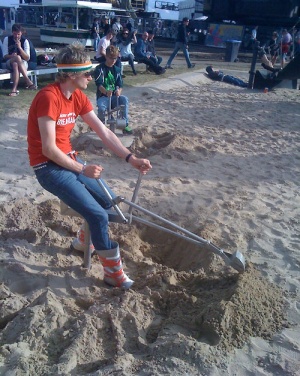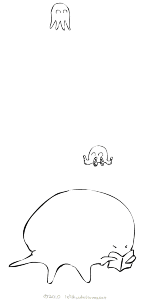6) The demand for new methods of teaching, such as flipped classrooms and blended learning, is coming from the students. Untrue.
Students are, for the most part, perfectly happy with traditional lecture courses. They know what to expect from and how to navigate courses that put no more demands on them but to reflect back the knowledge transmitted from the front of the room. -Joshua Kim, 10 Dubious Claims About Technology and Learning.
In this defense of educational technology, it appears that student demand isn’t driving classroom change. While being protective of educational technologists broadly, it tries to point out that educators are also driving the uptake of educational technology. Given the precarious lives of educators, the additional need to innovate, both pedagogically and technologically is important. Taken individually, pedagogical innovation is difficult, and requires a lot of work and support. What it does not necessarily include is an expanded budget for hardware, software, and associated staff. While Joshua Kim makes the argument that:
What is so important about this transition from a provider to a consumer of technology services is that these initiatives free up people and resources to move up the campus teaching, learning and research value chain. Technology folks are moving from server rooms to the classrooms, from provisioning and monitoring server applications to collaborating with faculty and librarians on flipped classrooms and blended learning. -Joshua Kim, 10 Dubious Claims About Technology and Learning.
The line of reasoning inextricably ties consumerism to technology and pedagogical innovation, which might free people up, but still ties up more money than if the connection between them was severed. The final and most curious point is this: if consumerism is the model, and students aren’t viewed as consumers, then why does this feel like marketing? While it is proposed that businesses are “consumer driven” and schools are “student driven” then why is demand for innovation not coming from students? Marketing, the art of tell others that they need something they didn’t know existed, is at the center of the pedagogy/technology coupling’s consumerist model. Even for the pedagogically well-intentioned, the inclusion of further goods and services on behalf of the students or the school means that we as educators are selling those products to students.
Such an outgrowth of the broader cultural imperative to sell is very much the Liberal Man’s Burden taken up by technology providers: everything is fixable by technology, which you are free to purchase, but it is not your right to that solution. Government, the cash-thirsty guarantor of hypothetical equality stands directly in the way:
Eric Schnuerer writes of a world where government literally is a product you can buy, an eventuality he sees foretold in the increase in private security forces and flight from public schools. In other words, “‘Government’ is, everywhere, an industry in serious trouble,” and his remedy is to “resize,” “redesign” the “products,” and “compete effectively against new competitors and in whole new markets.”
This misconception is at the heart of Silicon Valley’s approach to politics, both at home and abroad. In Packer’s words, technology “has little to say about larger issues of justice and fairness, unless you think that political problems are bugs that can be fixed by engineering rather than fundamental conflicts of interest and value.” -Kate Redburn, Google and The Liberal Man’s Burden.
The technologist approach is also marketing driven: it creates more needs than it solves in order to be financially profitable. Solving problems with existing tools, specifically through the application of pedagogy rather than pedagogy and technology, is less focused on consumption and more on hard-to-capitalize creation. The Liberal Man’s burden that technology has brought to bear in education is to make it profitable and condition the educational system to seek out profitable solutions to the human problem of educational values in the 21st century. Popular culture has a word for those who push back against the technological thrust in education based on such grounds: they are the hipsters of education:
Its zombie-like persistence in anti-hipster discourse must be recognized for what it is: an urbane, and socially acceptable, form of ideologically inflected shaming on the part of American elites who must delegitimize those segments of a largely white, college educated population who didn’t do the “acceptable thing.” -Anthony Galluzzo, The ‘Fucking Hipster’ Show.
Hipsters are the fixie-mounted, left-leaning, do-your-own-canning types who accept technology with reservations, but without Luddism. This is the analogy for those who question the efficacy of the technology/pedagogy pairing, and libraries, as places where older technologies sit comfortably beside newer ones, is hipsterism par excellence. Questioning the imperative to maximize one’s own economic advantage at one’s own expense runs counter to the “self-made” maximalist culture represented by the span of men from Carnegie to Zuckerberg. When a product is made, it bears the personality and values of its maker through and through. In education, we teach people to fit in or resist culture, so it has always been the site of contests for power. Defining educational institutions as site of “transition from a provider to a consumer of technology services is that these initiatives free up people and resources to move up the campus teaching, learning and research value chain” will teach students not to provide, but to consume.



















